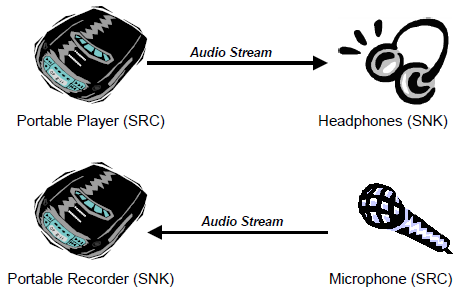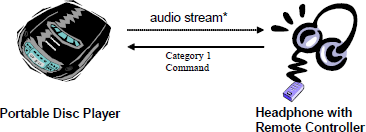Bluetooth Basics
Bluetooth Profiles
Bluetooth profiles are additional protocols that build upon the basic Bluetooth standard to more clearly define what kind of data a Bluetooth module is transmitting. While Bluetooth specifications define how the technology works, profiles define how it's used.
The profile(s) a Bluetooth device supports determine(s) what application it's geared towards. A hands-free Bluetooth headset, for example, would use headset profile (HSP), while a Nintendo Wii Controller would implement the human interface device (HID) profile. For two Bluetooth devices to be compatible, they must support the same profiles.
Let's take a look at a few of the more commonly-encountered Bluetooth profiles.
Serial Port Profile (SPP)
If you're replacing a serial communication interface (like RS-232 or a UART) with Bluetooth, SPP is the profile for you. SPP is great for sending bursts of data between two devices. It's is one of the more fundamental Bluetooth profiles (Bluetooth's original purpose was to replace RS-232 cables after all).
Using SPP, each connected device can send and receive data just as if there were RX and TX lines connected between them. Two Arduinos, for example, could converse with each other from across rooms, instead of from across the desk.
Human Interface Device (HID)
HID is the go-to profile for Bluetooth-enabled user-input devices like mice, keyboards, and joysticks. It's also used for a lot of modern video game controllers, like WiiMotes or PS3 controllers.
Bluetooth's HID profile is actually a riff on the HID profile already defined for human input USB devices. Just as SPP serves as a replacement for RS-232 cables, HID aims to replace USB cables (a much taller task!).
Hands-Free Profile (HFP) and Headset Profile (HSP)
Those Bluetooth earpieces that makes important business guys look like self-conversing wackos? Those usually use headset profile (HSP) or hands-free profile (HFP).
HFP is used in the hands-free audio systems built into cars. It implements a few features on top of those in HSP to allow for common phone interactions (accepting/rejecting calls, hanging up, etc.) to occur while the phone remains in your pocket.
Advanced Audio Distribution Profile (A2DP)
Advanced audio distribution profile (A2DP) defines how audio can be transmitted from one Bluetooth device to another. Where HFP and HSP send audio to and from both devices, A2DP is a one-way street, but the audio quality has the potential to be much higher. A2DP is well-suited to wireless audio transmissions between an MP3 player and a Bluetooth-enabled stereo.
Most A2DP modules support a limited set of audio codecs. In the least they'll suport SBC (subband codec), they may also support MPEG-1, MPEG-2, AAC, and ATRAC.
A/V Remote Control Profile (AVRCP)
The audio/video remote control profile (AVRCP) allows for remote controlling of a Bluetooth device. It's usually implemented alongside A2DP to allow the remote speaker to tell the audio-sending device to fast-forward, rewind, etc.



